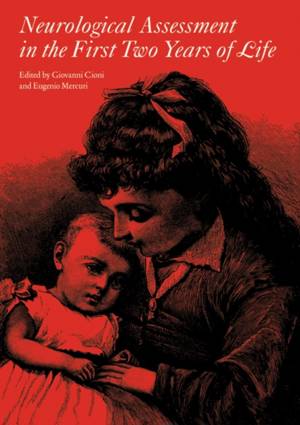
- Afhalen na 1 uur in een winkel met voorraad
- Gratis thuislevering in België vanaf € 30
- Ruim aanbod met 7 miljoen producten
- Afhalen na 1 uur in een winkel met voorraad
- Gratis thuislevering in België vanaf € 30
- Ruim aanbod met 7 miljoen producten
Neurological Assessment in the First Two Years of Life
Instruments for the Follow-Up of High-Risk Newborns
Giovanni Cioni, Eugenio MercuriOmschrijving
The book provides a review of the state of the art of neurological assessment in the first two years of life and identifies the most appropriate instruments for the follow-up of newborns who are at risk of developing neurological abnormalities.
After a brief description of the neurophysiological basis of development in the first years, the book provides a comprehensive review of the various methods used for the neurological assessment in young infants describing how a combined approach of clinical and instrumental investigations can provide important diagnostic and prognostic information.
The first part of the book describes the most used clinical neurological examinations and their applications in infants with neurological abnormalities, followed by a description of the value of neuroimaging and neurophysiological techniques in normal preterm and full term infants in the first two years and the main types of abnormal MR findings of neurophysiological findings (EEG and evoked potentials) in relation to brain lesions.
Other sections include chapters describing techniques assessing specific aspects of cognitive, perceptual and sensory abilities. Special attention is given to hearing, language and communication and to development of vision and visual attention both in normal infants and in those with neonatal brain lesions.
The final chapters are devoted to intervention, describing how the identification of specific profiles of impairment can lead to the development of appropriate plans of early intervention.
Specificaties
Betrokkenen
- Auteur(s):
- Uitgeverij:
Inhoud
- Aantal bladzijden:
- 256
- Taal:
- Engels
- Reeks:
- Reeksnummer:
- nr. 176
Eigenschappen
- Productcode (EAN):
- 9781898683544
- Verschijningsdatum:
- 1/01/2008
- Uitvoering:
- Hardcover
- Formaat:
- Genaaid
- Afmetingen:
- 173 mm x 241 mm
- Gewicht:
- 898 g

Alleen bij Standaard Boekhandel
Beoordelingen
We publiceren alleen reviews die voldoen aan de voorwaarden voor reviews. Bekijk onze voorwaarden voor reviews.











